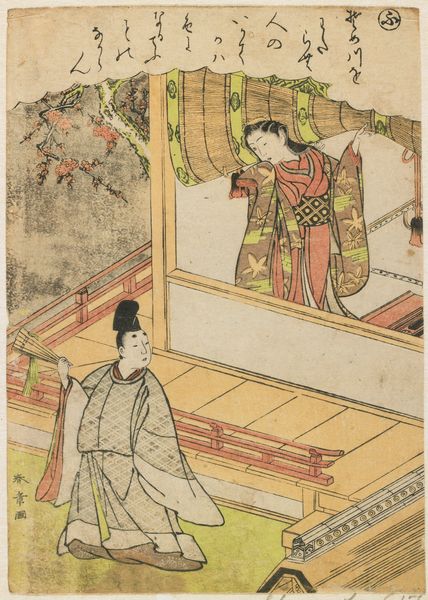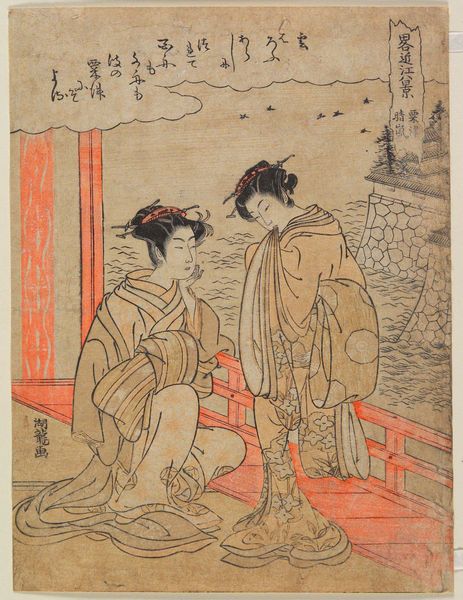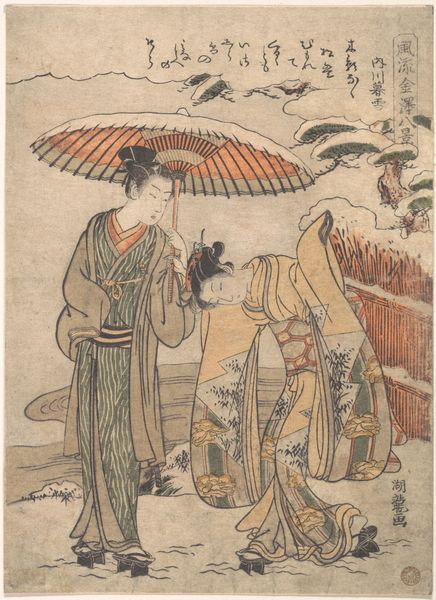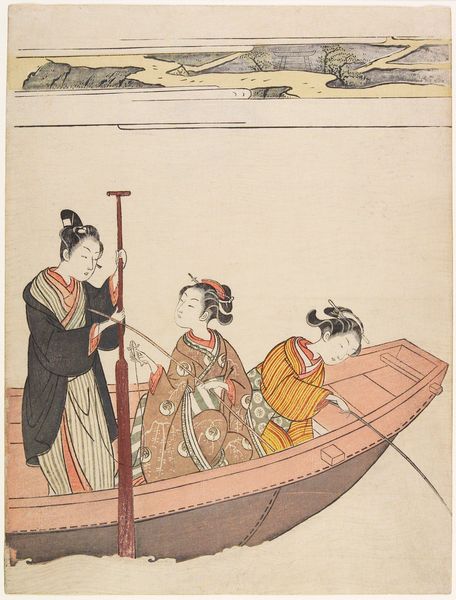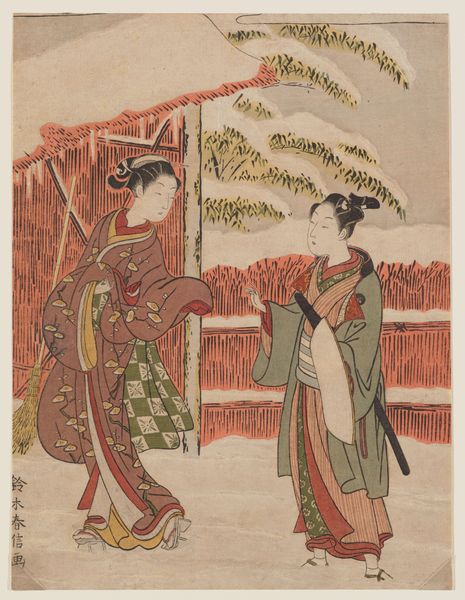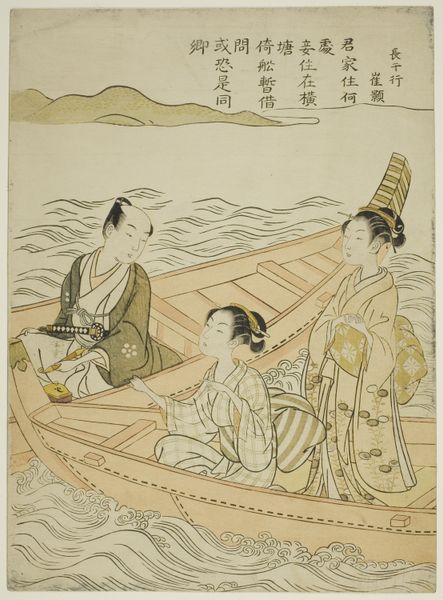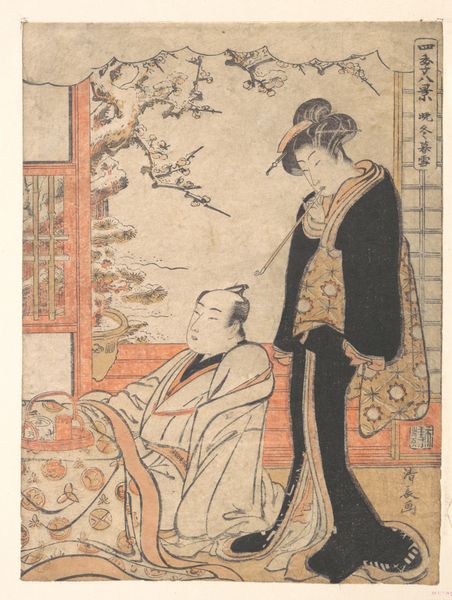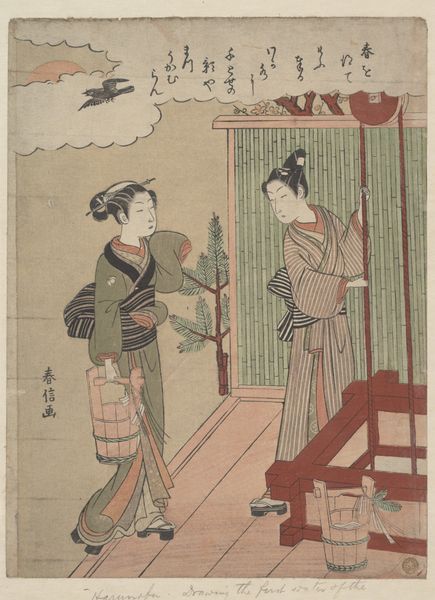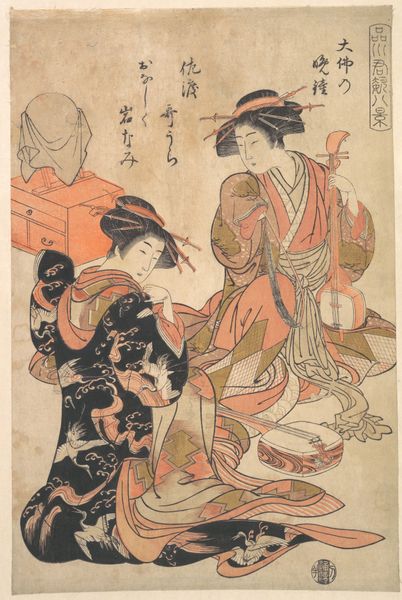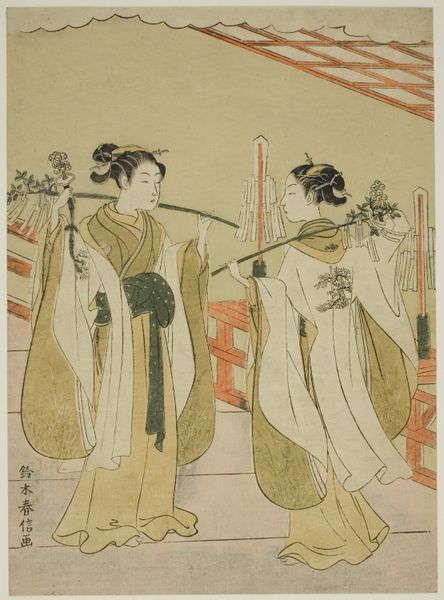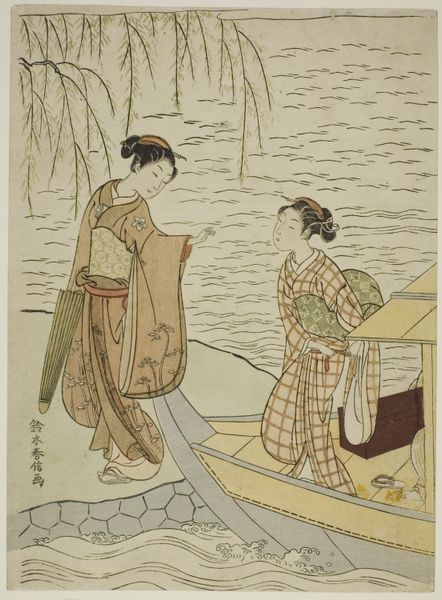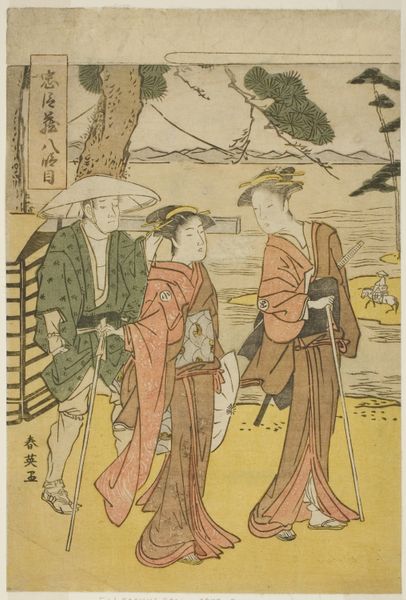
Parody of the Noh Play "Hakurakuten" 1756 - 1776
0:00
0:00
print, woodblock-print
#
narrative-art
# print
#
asian-art
#
ukiyo-e
#
figuration
#
woodblock-print
Dimensions: H. 11 in. (27.9 cm); W. 10 1/2 in. (26.7 cm) medium-size block (chu-ban)
Copyright: Public Domain
Curator: This woodblock print, presently held at the Metropolitan Museum of Art, is titled "Parody of the Noh Play Hakurakuten" and was created sometime between 1756 and 1776 by Suzuki Harunobu. What impressions does it spark for you? Editor: The initial feeling? It's like a memory softened by watercolours. I sense quiet, thoughtful drama unfolding. Something about the posture of the woman. She's caught in contemplation. Curator: Indeed. The artwork is rooted in complex social dynamics. Harunobu often employed "mitate," a visual pun, referencing classical literature or theater within contemporary contexts. In this print, we see a reimagining of the Noh play 'Hakurakuten'. The play tells of a Chinese poet whose boat is about to be overturned by dragons only to be rescued by Japanese deities in the form of fisherman. Editor: The past, playing out again, but in different costumes. Are we seeing the woman as one of those protective deities here, only in disguise? It would mean she has her own strength or even holds authority. Her elaborate kimono suggests status, and that scroll...what's she hiding, or perhaps about to reveal? Curator: Precisely. That’s where the socio-political commentary becomes intriguing. Ukiyo-e prints were not merely aesthetic objects but could function as veiled criticisms or expressions of social aspirations. Representing her with a scroll alludes to both high culture and artistic accomplishment and places the work in the "poetry contest" subgenre of Ukiyo-e, in which the artist attempts to capture both images and relevant poetic associations simultaneously. What do you make of the second figure, mirroring the composition in the other boat? Editor: He seems like a stern but bemused observer. He’s got his own scroll! Maybe he's a rival, a suitor, a figure she is subtly outwitting in the world of artistry or courtship. A book also appears to be balanced precariously near the bow of the boat, a detail that can either be considered inconsequential or filled with additional symbolic weight about learning and social advancement. The colors, though muted, highlight this gentle game of power. The work speaks quietly and coyly. Curator: It's fascinating how Harunobu encapsulates a web of cultural references and social commentaries through a deceptively simple visual scene. I’m constantly discovering how intersectional narratives appear when considering Ukiyo-e traditions like this. Editor: Absolutely. For me, there's something magical about how Harunobu distills these complex narratives down to a single, almost dreamlike image. It invites introspection. It lets you imagine the story rippling out beyond its borders.
Comments
No comments
Be the first to comment and join the conversation on the ultimate creative platform.

